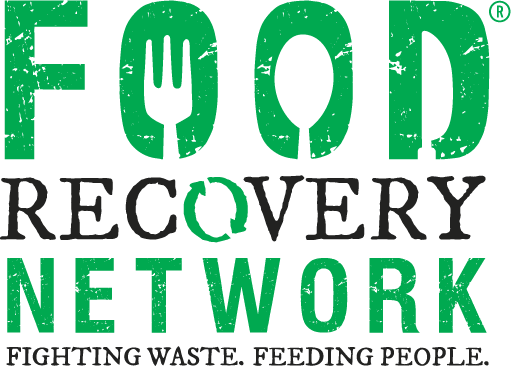(left) Angie Gregory, MHC's Sustainability Program Manager and FRN Chapter Advisor, and (right) Charlotte Cai, FRN Co-Founder and Mount Holyoke College Graduate 24'
When we first considered activating Mount Holyoke College’s (MHC) Food Recovery Network (FRN) chapter, my friends and I weren’t sure whether we qualified. At a school where one centralized dining hall keeps careful track of pre-consumer, recoverable kitchen scraps, it turned out that the majority of food waste came from post-consumer scraps—food that students took onto their plates and threw away at the end of a meal.
This problem statement made us hesitant. After all, if we didn’t have food available for recovery, did we count as a school that could be part of the national Food Recovery Network? Through many conversations with dining staff, school policy decision makers, and other students, each question led to another open question mark. Would we target policy to create choice structures to guide student food decisions? Maybe aim for the education track, where students would be more apt to hear about food equity coming from another student? Weigh-the-waste events to raise awareness? Community events to encourage longevity? Partnerships across campus? There was no straightforward path—our FRN chapter would just have to take it one step at a time, involving as many stakeholders as possible. This was slower, but it also built a foundation of trust and commitment for sustained change on campus.
What followed was the most fruitful semester of my college experience. We built our FRN chapter through relationships, wading together through the gnarls of the campus food experience to identify three main arms: policy, education, and composting.
Co-founder Zainab created an educational food waste module for the first-year seminars required for all new students.
Our chapter’s other co-leader Maya researched composting opportunities with MHC’s on-campus horse stables and outlined a blueprint for centralized raised-bed gardens.
Throughout the semester, MHC FRN hosted three weigh-the-waste events. During these events, we collected data on the flow of lunch rush and students’ reasons for leftover food, which I used to support my policy proposal for an alternative meal plan option.
Additionally, my published piece for the school newspaper brought attention to our role as students within a larger food ecosystem, and the central role care plays in decreasing post-consumer food waste.
Halfway through the semester, MHC’s FRN chapter partnered with other on-campus climate justice orgs and our school’s environmental center to host Dining Hall Appreciation Week. During the week, we posted informational signage, led a social media campaign on food waste, and tabled outside the dining hall to create thank-you-dining-workers posters.
The connective thread through our actions was our commitment to campus stakeholders—students, dining staff, academics, and groundskeeping alike. Since the physical act of food recovery was not feasible at our school, we found alternate ways to contribute to our community’s food experience. Even at campuses where food recovery is the most pressing path forward, there are possibilities for other nodes of connection, led first by continuous and diverse stakeholder conversation. Importantly, food recovery itself extends beyond the physical act into possibilities for community care. When we understand food recovery as part of our shared reality, in what other ways can we reimagine our collective food experience?


